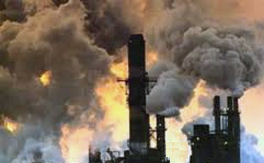The emissions gap report: are the Copenhagen Accord pledges sufficient to limit global warming to 2 C or 1.5 C?

This latest assessment by UNEP spotlights worst case and best case scenarios up to 2020 while estimating the emissions gaps likely under various outcomes that will need to be bridged in order to avoid 'dangerous' climate change.
Climate change represents one of the greatest challenges but also an inordinate opportunity to catalyze a transition to a low-carbon, resource efficient Green Economy. This report informs governments and the wider community on how far a response to climate change has progressed over the past 12 months, and thus how far the world is on track to meet wider goals. The pledges associated with the Copenhagen Accord of 2009 are the point of departure for this report. What might be achieved in terms of limiting a global temperature rise to 2ºC or less in the 21st century and in terms of setting the stage for a Green Economy? And what remains to be done - what is the gap between scientific reality and the current level of ambition of nations? The analysis focuses on where global emissions need to be in around ten years time to be in line with what the science says is consistent with the 2°C or 1.5°C limits, and where we expect to be as a result of the pledges.
